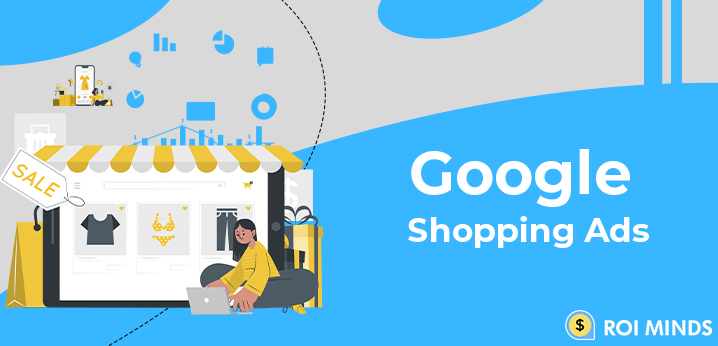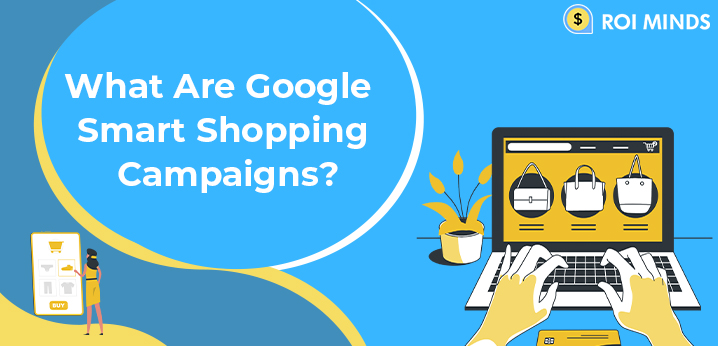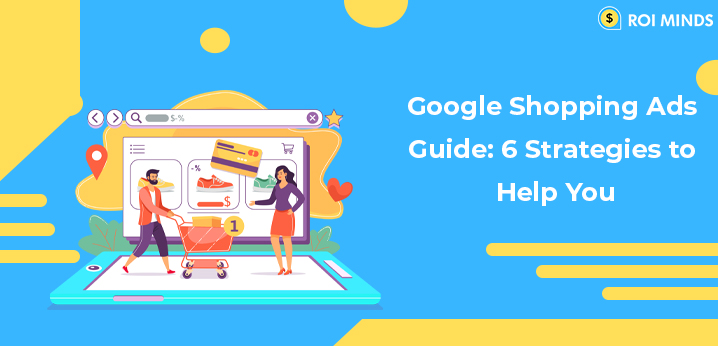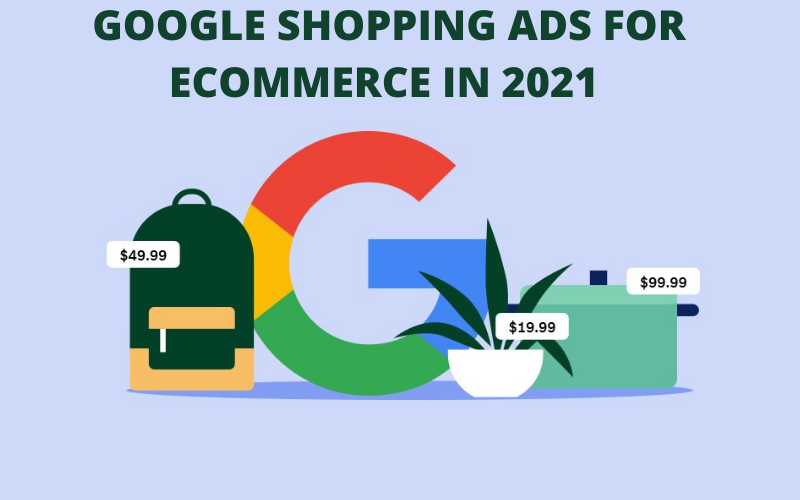What Are Google Shopping Ads?
Google Shopping Ads or Product Listing Ads (PLAs) are product-based ads that appear for product searches across Google and Google Shopping.
Product Listing Ads include:
- Product Image
- Price
- Brand
Additional information can be layered into the ad, including:
- Reviews
- Shipping Information
- Promotions

Google Shopping Ads can be an incredibly effective marketing channel because you can reach shopper-specific-search queries with clickable images at the very top of the search results (above organic results).
While Google Shopping Campaigns have been around for some time, Google has added powerful capabilities over the years, such as Showcase Shopping, Local Inventory Ads, Smart Shopping campaigns, new smart bidding strategies, and more.
To start creating Shopping Ads, you’ll need to set up a product feed that connects with your Google Merchant Center. This process dynamically integrates your catalog inventory with Google’s Shopping platform.
Whether you are a veteran Google Shopping advertiser or a newcomer, your Shopping ads performance will depend on your ability to dial in three key areas:
- Product Feed Optimization
- Targeting & Bidding Strategy
- Campaign Structure
We’ll cover each in this guide and provide additional tips to help you stand out against the competition after covering Google Smart Shopping campaigns and the Merchant Center.
What Are Google Smart Shopping Campaigns?
Smart Shopping campaigns are a variant of the Google Shopping Ads to simplify advertising on Google Ads by using automated bidding, creative ad customizations, and ad placements based on Google’s machine learning.
Smart Shopping campaigns feature both Product Shopping ads and display ads (including remarketing ads and Similar Audiences), eligible to appear on the Google Search Network, Display Network, YouTube, and Gmail.
Smart Shopping gives businesses with smaller bandwidth (as well as advertisers with large catalogs) the ability to generate product listing ads with minimal assets and input required.

Over the years, we’ve seen Google’s machine learning become more effective in how it optimizes and streamlines campaign performance, but there are caveats to using Google Shopping.
- Layer in Remarketing with RLSA Campaigns
Remarketing Lists for Search Ads (RLSAs) enable you to target people who have previously visited your website, past purchasers, or audiences who have interacted with your company in some way. They provide a significant opportunity for driving lower funnel conversions and repeat purchases.
2. Target New Visitors with Similar Audiences
You can attract new visitors to your site using Similar Audiences by finding people who have similar search and/or browsing behavior to your existing remarketing list members.
“Similar audiences are excellent for discovering other audiences that are similar to your best-performing users.” This helps narrow that broader audience down to users who match our previous buyers’ online personas,” says Harms.
You can show your ads to people whose search behavior is similar to your site visitors by including Similar Audiences in your campaign or ad group targeting. These individuals are more likely to be prospective customers.
What are the Benefits of Similar Audiences for Shopping?
- Simplified audience targeting – Similar audiences targeting eliminates the guesswork of discovering new audiences by automatically identifying potential customers similar to people on your existing remarketing lists for search ads.
- Increasing the reach of existing remarketing campaigns and driving new, more qualified users to your site – With similar audiences, you can increase the reach of existing remarketing campaigns and drive new, more qualified users to your site who are more likely to perform actions that are important to you.
Even if these similar audiences do not immediately purchase from your site, they will be added to your remarketing list if you have added the remarketing tag to your site.
3. Include Geo-Targeting Modifiers
We also recommend being more aggressive with geo-targeting modifiers for your Google Shopping ad campaigns.
Geography-based bid changes, also known as modifiers, are a feature that allows advertisers to adjust bid percentages based on location.
When configuring Geo bid modifiers for Google Shopping Campaigns, keep the following things in mind:
- Choose which regions to target based on your site’s, audience’s, and performance objectives.
- Consider segmenting for both online and offline locations.
- Take note of the location-based customer intent (remember the location and targeting intent can be combined).
- Use mobile ads that can be redeemed in-store for customers close to stores.
- Investigate Analytics data and Google Ads dimensions reports (geographic report, location report, and custom columns to reflect visitor data).
Depending on your situation, you might want to get even more granular by drilling down to the city/zip code level if you haven’t already.
4. Get Competitive with Auction Insights.
With more advertisers investing in Shopping than ever before, it’s critical to understand when impression shares begin to rise.
Our experts use Google Auction Insights to compare their performance to other advertisers competing in the same auctions as them.
This type of data can assist retailers in making strategic decisions about bidding and budgeting by highlighting where they are succeeding and where they may be missing opportunities for improved performance.
“If you’re in a highly competitive space, we recommend checking in on Auction Insights monthly, if not weekly.” When everything else is equal (CPCs, clicks, average position, etc.), but conversion rate or CTR is declining, competition is most likely the variable causing the change.”
5. Reach More Mobile Shoppers with Showcase Shopping Ads
While many marketers think of Shopping as a revenue driver for capturing and converting demand, you can also use Google Showcase Shopping Ads to target upper-funnel search queries.
Google Showcase Shopping Ads’ primary goal is to assist shoppers conducting non-branded searches in exploring and discovering what they want to buy and where they want to buy it.
Showcase by Google Shopping ads is shoppable ads that appear at the top of Google Search on mobile devices when users search for broad, high-volume keywords.
This is significant given that more than 40% of shopping-related searches on Google are for broad terms such as “women’s athletic clothing” or “living room furniture.”
6. Include Merchant Promotions with Your Shopping Ads
Merchant promotions can significantly impact the performance of your Shopping campaign, especially when competing with Amazon and Prime shipping.
Merchant promotions, also known as special offers, allow retailers to highlight their products while increasing their chances of click-through rate and conversion.
On Google’s PLA grid, online advertisers can include coupons or promotions alongside product or store information.
The following are some of the advantages of using Merchant Promotions:
- Acquisition – By emphasizing listings, retailers can increase their click-through rate.
- Conversion – Increase conversions by providing shoppers with a compelling reason to buy now.
- Cost – There is no additional charge for including promotions with Product Listing Ads.
Recommended Google Product Listing Ad Merchant Promotions:
- Free shipping
- Lowering the free shipping threshold
- Buy one, get one or Buy one, get one 50% Off
- Tiered percentage discounts (Example: 5% Off Orders of $50, 10% Off Orders of $100 or more)
- Brand-specific rebates (Example: One for each brand, sponsored by the manufacturer)
Final Takeaway
Google Shopping Ads can be a highly effective revenue-generating channel for any retailer, especially with advancements in Smart bidding and targeting tools, improved inventory (like Showcase), and other features that can improve the impact of your Shopping campaigns.
The ROI of your Shopping ad campaigns, on the other hand, is determined by your ability to test and optimize everything from your product feed to your structure and targeting.
If you use a test-and-learn approach to master the following three areas, the success of your Shopping initiatives will improve:
- Product Feed Optimization
- Targeting & Bidding Strategy
- Campaign Structure





